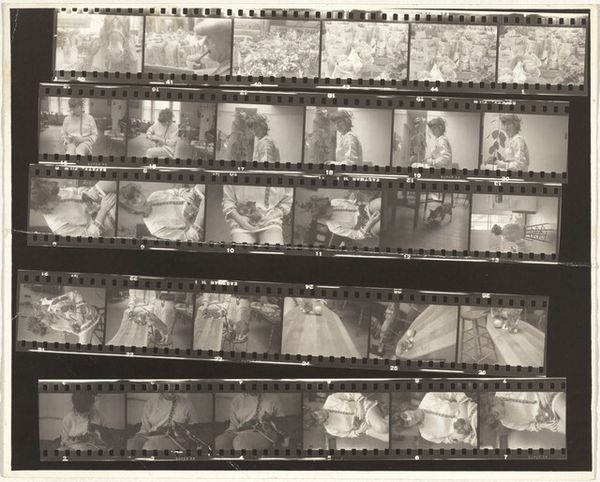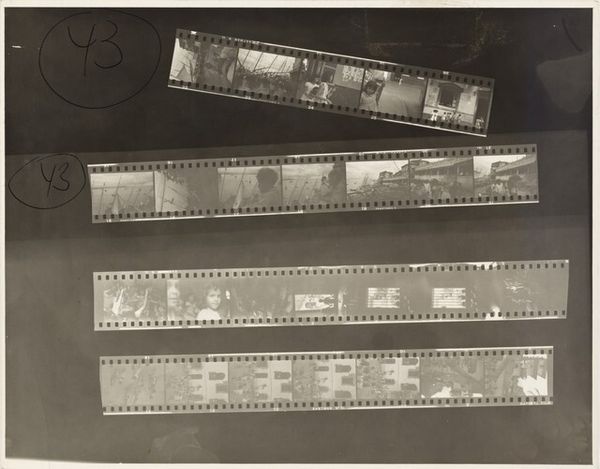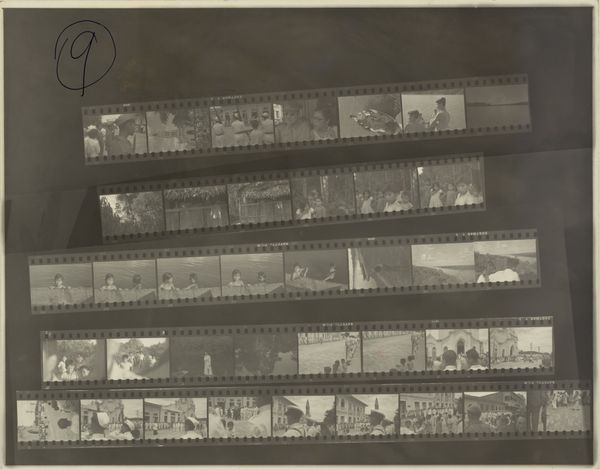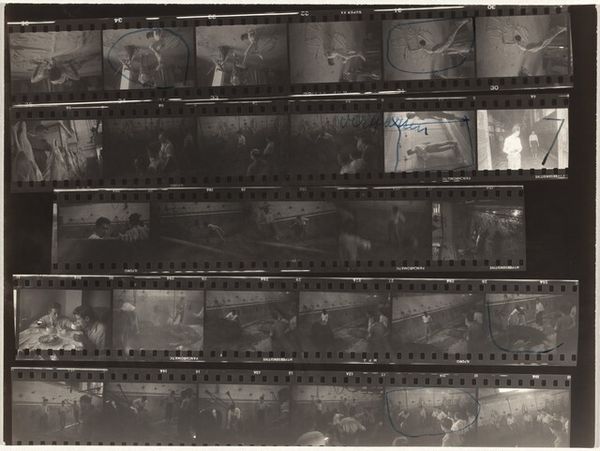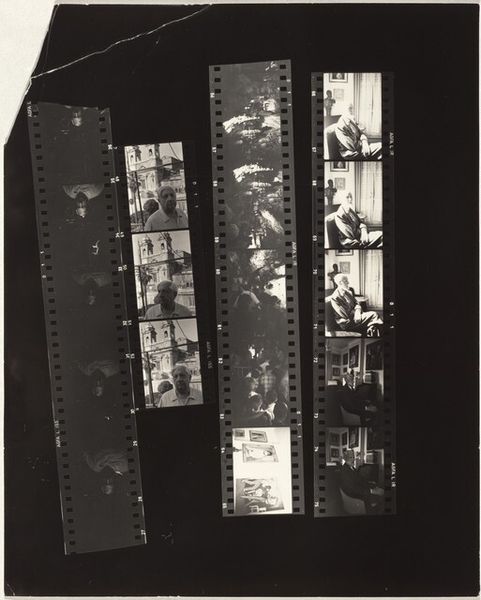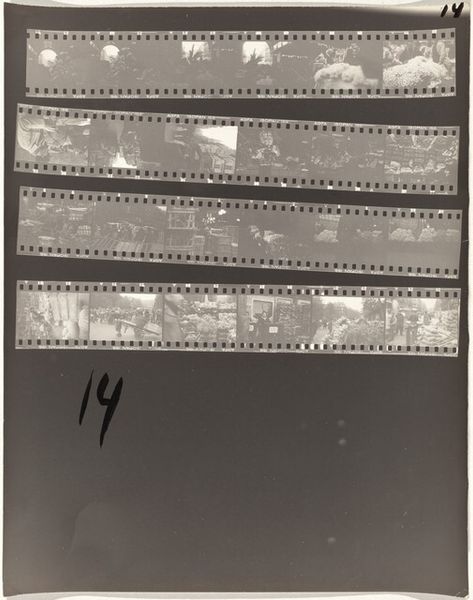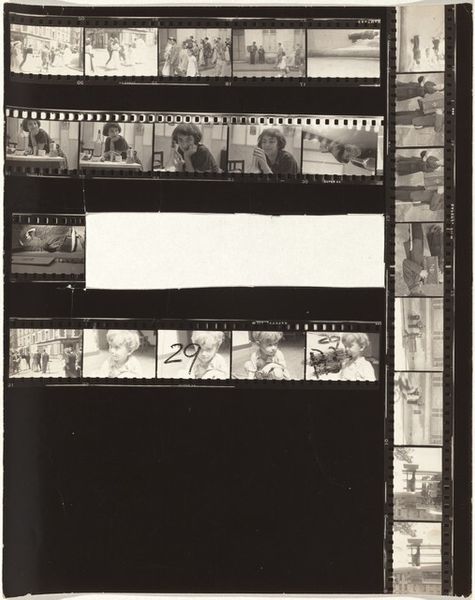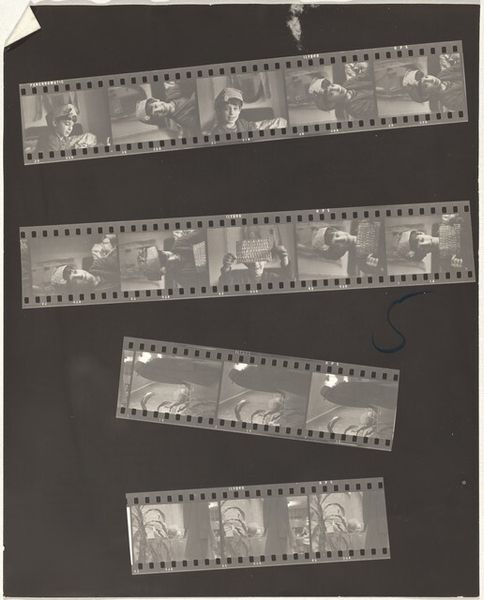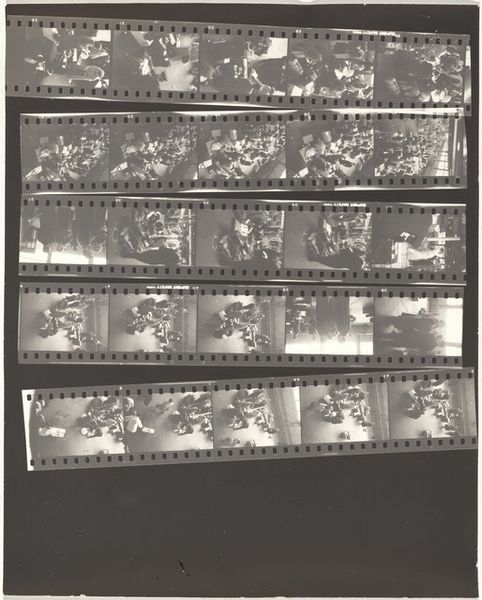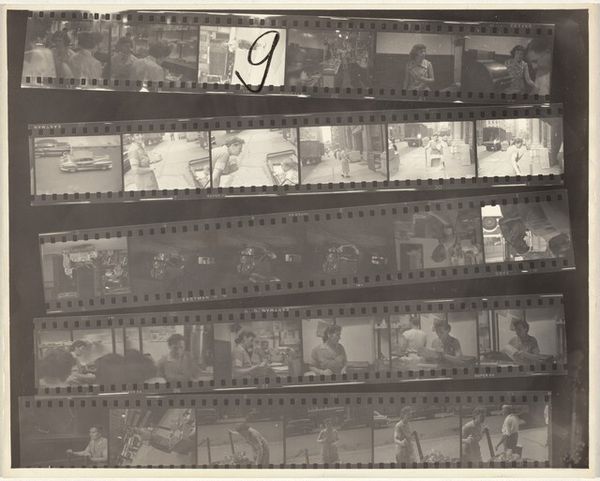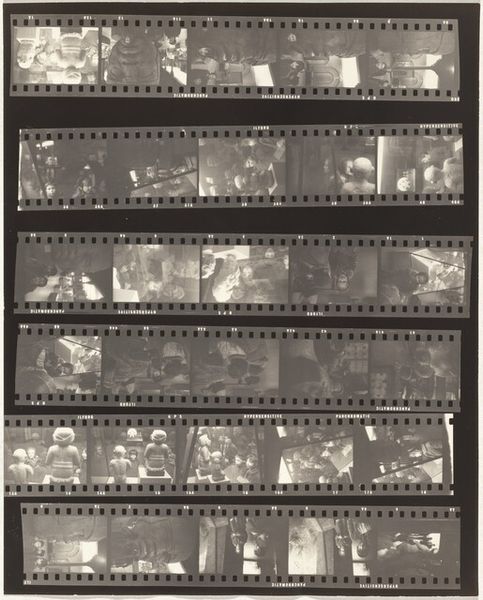
print, photography, gelatin-silver-print
#
portrait
#
abstract-expressionism
# print
#
archive photography
#
street-photography
#
photography
#
gelatin-silver-print
Dimensions: overall: 20.2 x 25.2 cm (7 15/16 x 9 15/16 in.)
Copyright: National Gallery of Art: CC0 1.0
Editor: This is Robert Frank's "11th Street story B," a gelatin-silver print from 1951. What strikes me is its presentation—it shows the photographic film itself, rather than a single, perfectly framed image. What story do you think Frank is trying to tell? Curator: That's a great observation! I think this piece invites us to consider photography beyond just capturing a single, decisive moment. By presenting the film strip, Frank reveals the process, the selection, and even the imperfections inherent in documenting reality. The image prompts me to consider whose stories get told, and how their narratives are constructed and by whom? Editor: So, it's not just about the content of the photos, but the act of taking and choosing them? Curator: Exactly! Think about the social climate of the 1950s in America. Frank, as an outsider, was capturing a reality often unseen in mainstream media. This approach is interesting when contextualized in broader narratives about the gaze and power, and whose perspectives are legitimized, whose are marginalized? How does this work reflect on the power dynamics inherent in visual representation? Editor: That's really interesting, especially the way you framed his role as an outsider. I never thought about that! Do you think that has something to do with the snapshot aesthetic, the somewhat rough, unpolished look? Curator: Absolutely. The apparent casualness challenges the idea of objectivity in photography. The conscious act of revealing the raw film, it feels deliberately disruptive, almost a visual rebellion against the polished imagery often used to project an idealized America. It asks: whose "America" are we seeing, and from what point of view? Editor: It definitely gives you a lot to think about, seeing the photograph that way! It’s more than just a picture, but about the statement of choosing that picture. Thanks so much for pointing that out. Curator: Indeed! I think Frank urges us to remember that photography is never neutral; it's always a constructed narrative. And this is important when critically viewing artwork from diverse cultural contexts.
Comments
No comments
Be the first to comment and join the conversation on the ultimate creative platform.

